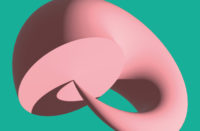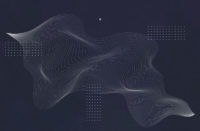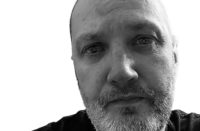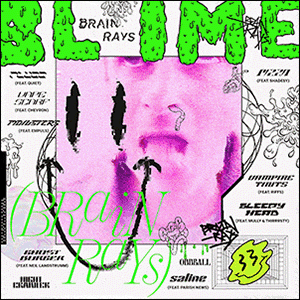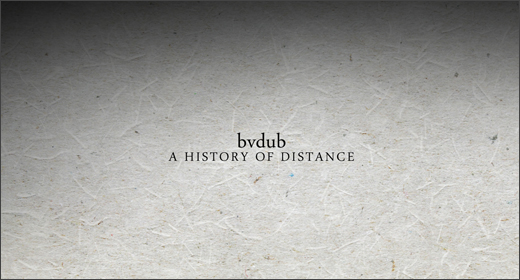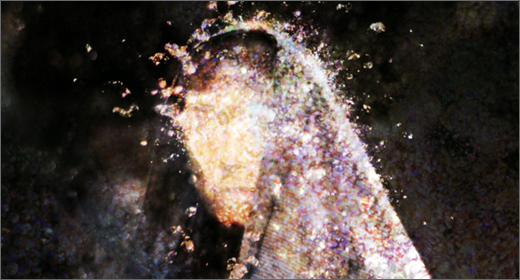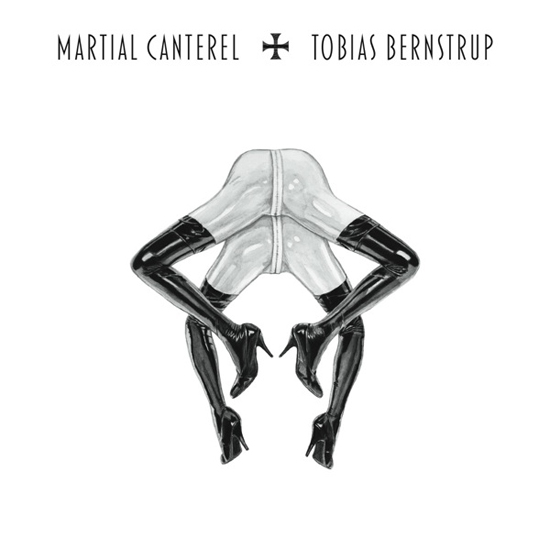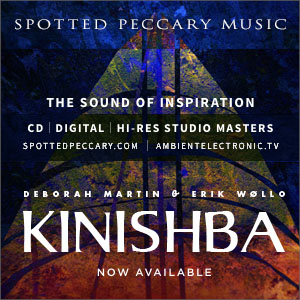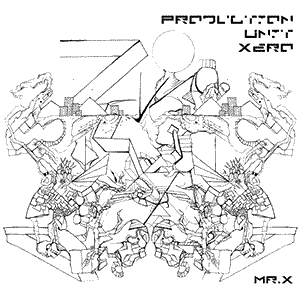Tobias Lilja responds to a few questions regarding his background, production techniques (specifically his nebulous vocal elements) as well as the forthcoming Delirium Portraits album, set for release September 27th, 2011.
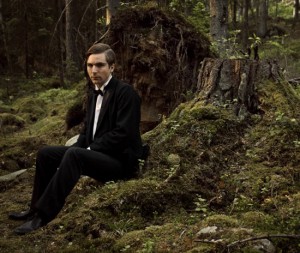
[September 2011] Delirium Portraits is Tobias Lilja‘s latest musical opus for n5MD and not only does this skilled Scandinavian filter through a mesh of multi-textured vocal abstracts, he closely ties them to minimal dub-techno strains, veiled synthetic washes, upbeat microcosms of noise and a plethora of distilled basslines. His sonic sculptures, often breaking apart as they collapse into thick forests, are packed to the brim with kaleidoscopic color. This saturation of sound, carefully woven around frayed story-lines, is produced with an ear for clarity, consistency an internal-struggle touching the heart, mind and soul. It is with the continual exploration of Delirium Portraits‘ chiseled cuts that one begins to uncover the layers of subliminal textures floating to the surface. If Time Is On My Side represented waves of blistering darkness, Delirium Portraits, in contrast, is its long-lost relative. Filled with a glistening, almost contagious pulse, each fragment of lyrically interwoven rhythms bounces back and forth between the eardrums as it lures you into its hazy abyss.
Tobias Lilja responded to a few questions regarding his background, production techniques (specifically his nebulous vocal elements) as well as the forthcoming Delirium Portraits album, set for release September 27th, 2011.
:::….:.:::….:::::::..:::::…..::..::::…::::.:.::::..:::…:::….:::.::::.:.::.:::.:::.:::…:::..::…::
Delirium Portraits CD/Digital Giveaway ::
Two copies of Delirium Portraits (CD / poster / postcard bundle) and two copies of the digital version (with bonus material) are available as a giveaway. To enter, email [email protected] with your physical mailing address (as well as any comments regarding Tobias Lilja / n5MD related), and we’ll announce the four lucky winners on Sunday October 2, 2011.
:::….:.:::….:::::::..:::::…..::..::::…::::.:.::::..:::…:::….:::.::::.:.::.:::.:::.:::…:::..::…::
Igloo Magazine :: What is your background and how does it affect your music? Influences, passion, theories about the Tobias Lilja soundscape?
Tobias Lilja :: Like many other musicians, I grew up in an environment where music was always present. My three older brothers played instruments and listened to music in various genres. They also introduced me to electronic music. Most of it was some kind of instrumental orchestral synth music, for example Vangelis, Jean Michel Jarre, Ralph Lundsten etc. Today that music would be considered quite cheesy, but I loved it. My oldest brother Patrik also gave me an LP with Kraftwerk (Man Machine) when I was 7 years old. I think he got tired of it, that’s why he gave it to me. I listened to ”The Robots” all the time. I was fascinated by the sounds, I remember I imagined different materials and textures when listening to the sounds. Some sounds were sticky, almost like tape, while other sounds were slimy etc. Generally, I was more interested in the sounds than the actual songs or the melodies. I think that way of listening to music still applies for me today, at least to some extent.
Later, in my teens I discovered techno and drum’n’bass. And this is also where I started making music with computers. My other older brother Joakim (who by the way is an extremely talented sax and violin player) showed me how to make music using an AMIGA computer and a music software called Protracker (one of many ”trackers” available back then which basically enabled you to make music without any type of studio equipment). I started playing around with it and made simple compositions by copying and pasting samples from other peoples tracker songs which I could open and de-assemble. This was around 1995-1996.
Simultaneously, I played the trumpet, but I thought that was very difficult compared to making music with computers. On the computer, you could control several instruments at once; bass, drums, pads and lead sounds. I liked that. It was simple to make cool sounds – unlike the trumpet where you had to practice everyday to be able to play even a single note in a descent manner. Making music with computers was child’s play (literally). I had no ambitions, I did this in parallel to playing video games.
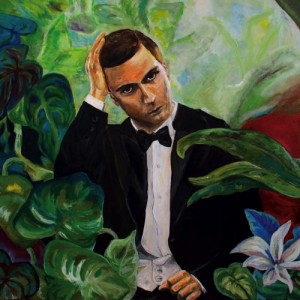
Some years later, my brother Joakim bought a hardware sampler, which I borrowed. That meant I could record my own sounds and use them in my songs. Quite soon I connected the sampler to a computer and tried to learn how to control it via MIDI. I got more serious about the whole thing and recorded cassettes and CD-R’s with drum’n’bass. This was around 1998-1999.
So there you have it; my musical background comes from growing up with electronic music and playing around with computers and sampling. Still today, I’d consider the method of recording sounds and using them as building blocks in a musical context to be my main instrument. For me, the actual sounds – the texture, quality and inherent mood of them – is equally important as melodies or chord structures.
Igloo :: Tell us about the process of your production. Vocals entwined with experimental electronics and saturated rhythms are often blurred. How do you envision the basis of your music and how would you describe the outcome?
TL :: My process is actually changing all the time. I’m constantly searching for tools that can make the whole process more intuitive. It’s amazing what you can do with software these days, but currently I’m looking for gear and methods that doesn’t rely on computers so much. I admire artists who can use low-tech equipment in creative ways. Chris Clark for example; from what I’ve read, he uses hardware samplers and an old wobbly mono tape recorder. For me, such a method is more inspiring than to use the latest super-advanced software synth. I guess it’s about limiting your possibilities to get your creative mind started.
The biggest shift occurred around 2005 when I started to record my own voice. For me, that was the most intuitive instrument I could think of. The voice is such a strong part of your identity, and when you use it in music, things get very personal and unique. When you use synthesizers, sounds can sometimes feel generic. I always strive to find unique twists of the sounds I use. The human voice is perfect raw material in that process. It can be shaped into basically any kind of instrument: bass, beats, lead – and perhaps most interestingly: provide words. This may sound like an obvious fact, but I had to take a big detour to discover the potential in using lyrics…
I’d consider the method of recording sounds and using them as building blocks in a musical context to be my main instrument. For me, the actual sounds – the texture, quality and inherent mood of them – is equally important as melodies or chord structures.
I try to use my own voice as much as I can. Many songs start with a simple improvisation over one or two chords. I usually record thick layers of harmonies and short melodic patterns and then edit these recordings very carefully. So you could say that the composition process is based on careful editing of improvisations. The lyrics often derives from those improvisations as well. I really enjoy this way of recording; to be in the moment and be very spontaneous about where you go melodically and lyrically. When you record like that and don’t know what words to sing, your subconscious often picks the words for you which can be a quite strange and interesting experience. My aim is to make rest of the process equally intuitive. The mixing and editing process is still slow and a bit cumbersome. But on the other hand, the editing and mixing process is an essential part of the composition process, so I guess that needs to take time.
Sometimes I do write songs ”the usual way” on a piano before recording it. “Love Song” on Delirium Portraits was originally written that way.
How would I describe the outcome? It depends on the project, my goal for Delirium Portraits was to create a fictional universe with its own twisted logic. Sort of like our world seen through a deranged mind – or perhaps several different minds – hence the word ”portraits” in the album title. I’m taking on different characters, trying to see things from their point of view. Music is my comfort zone in that sense. Since it’s my universe, I’m in control and allowed to experiment freely. That’s also a reason why I like the album format. You have the time to establish certain rules for how things work and how things sound.
But I hope that the outcome is music that slowly unfolds the more you listen to it. I don’t want the music to sound complicated or advanced, but rather multi-layered and complex in a natural way. Something that pulls you in. It should be rewarding to listen to it intensely. All my favorite records have an inexhaustible richness that you can dig into. When I discover new music, I listen to the same record for days, trying to get to know every detail.
[soundcloud url=”http://api.soundcloud.com/playlists/1120440″ height=”200″]
Igloo :: Delirium Portraits has a push-pull feeling of expressive upbeats, sheared techno, moody lyrics, abstracted tonal activity and is (overall) brighter in concept compared to Time Is On My Side. How would you contrast these releases, if at all?
TL :: Yeah, I would absolutely contrast those albums. In my opinion, Delirium Portraits is more dynamic. More beats and a sharper contrast in intensity between different parts. I’m also trying to expand my vocal register by singing both lower, higher and louder.
The lyrical themes on Time Is On My Side were close to me personally, and the ambient nature of the album made the whole thing very introspective. I would say that Delirium Portraits is more about story telling and maybe a bit more open for interpretation. It’s still introspective, but in a different way, perhaps with a bit more self-distance.
Igloo :: Do you draw (any) influences from current-era electronic music or do you rely on self-inspiration to propel yourself?
TL :: Yeah, of course. It’s difficult not to be influenced by other artists. I believe most art is influenced by previous works in some way. The Swedish trance duo Antiloop once said in an interview ages ago something like this: ”When you listen to music you pick up certain fragments and store them in your memory. Then, weeks later when you’re in the studio, those fragments can suddenly appear, and you add them in your own music.” It’s exactly like this for me too. The other day I listened to Jeff Buckley for the first time in several years, and discovered that I had borrowed a part of a vocal melody without knowing it. So I pick up fragments from all kinds of music all the time.
When it comes to current-era electronic music I am often inspired by production techniques, arrangements and sound design. Some parts of Portraits is influenced by techno and tech house. The reason for this is probably because I spent a lot of time clubbing after I finished Time Is On My Side. But I have always loved making beats and rhythms. House music reminds me of my childhood, so for me there is actually a nostalgic value to it. In some strange way, this make sense on the album since some of the lyrics are dealing with childhood events.
One music trend that is happening now which makes me happy and inspired is that many electronic artists are combining the playful swing of dubstep with other genres. Artists like Mount Kimbie, Modeselektor, Randomer and Blawan have recently released stuff that are like creative injections.
Another genre that I find myself listening to more and more is impro jazz. Especially artists who’s exploring the boundaries of their instruments or trying to avoid rules and conventions of traditional music. Performers like John Butcher (saxophone), Mats Gustavsson (saxophone), Gino Robair (percussion). This limitless exploration of instruments and sound is like a cure for me. It’s music I listen to when I’m tired of music.
Igloo :: Your analysis and use of vocals / lyrics definitely creates a personal touch with your pieces (as you mentioned). Do you feel that this aspect of ‘the voice’ is missing in today’s experimental electronic scene?
TL :: No, not really. Artists like James Blake and Jamie Lidell are pushing the border for how the voice can be used as an instrument – and they are even reaching mainstream audiences without compromising. And of course giants like Björk, David Sylvian and Diamanda Galás have been pushing those borders for decades.
Out of curiosity I sometimes deliberately stage clashes between sounds, instruments or genres and then run and hide behind a bush to watch how it all plays out.
Igloo :: There is both light and dark weaved throughout Delirium Portraits, almost a struggle (or ‘story’ as you say) that subliminally breaks apart at the seams. Do you compose your work in one ‘fluid’ outpouring or is it pieced together as a particular theme/order?
TL :: Do you mean if I try to balance light and dark throughout the album? I usually spend a lot of time finding a track order that works as an album, and in that process you can re-arrange things until you find a good dynamic. Some songs are dropped from the playlist, often because they don’t fit into the theme and overall sound of the album. So I’d say it’s more of a puzzle than a fluid outpouring (although the process of creating a single song can be very fluent and direct). I rarely decide in advance what the overall theme should be, that often reveals itself after some time, or near the end of a project.
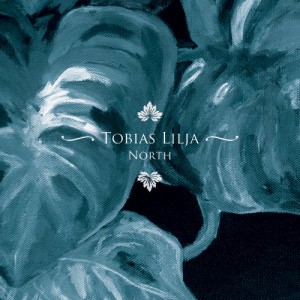
Igloo :: “Our Noise,” “North” and “Birthday Cake,” three of the more dance-friendly tracks on Delirium Portraits, are subtle, direct, and abstract all in the same instant. Catchy, moving and focused without diving into commercial terrain, how do you maintain your balance during the creative process to ensure the entire package is just right?
TL :: Those tracks were actually reworked several times! The first demo recording of “The Carnival” (on North EP) was 13 minutes long (the final version on the EP is around 6 min). Initially, I was pleased since I had made absolutely no compromises. Eventually I tried to shorten the song – along with some other songs – to make them a bit more accessible. This was quite difficult initially because I was afraid that I would interfere with the natural flow and buildup of the songs. But after a while I discovered I could build up another type of tension that way. Not the one based on repetition, meditation and slow build-ups, but instead something more compact and direct. This felt more powerful somehow.
But I do find it interesting when a song has a kind of internal struggle. This can sometime happen when elements from totally different genres are trying to get along, or perhaps the whole song are slowly drifting between different genres or levels of intensity. Some producers would try to smoothen out these differences or refine a single path. I can admire that since that is difficult, but for me these internal struggles feel honest somehow. Out of curiosity I sometimes deliberately stage clashes between sounds, instruments or genres and then run and hide behind a bush to watch how it all plays out. It’s very rare that you are absolutely, 100 % sure about something. There is always an internal struggle going on.
:::….:.:::….:::::::..:::::…..::..::::…::::.:.::::..:::…:::….:::.::::.:.::.:::.:::.:::…:::..::…::
North EP is out now and Delirium Portraits is out now on n5MD.
TobiasLilja.com | n5MD Artist page | TL Facebook | Photo/artwork by Anna Moberg






